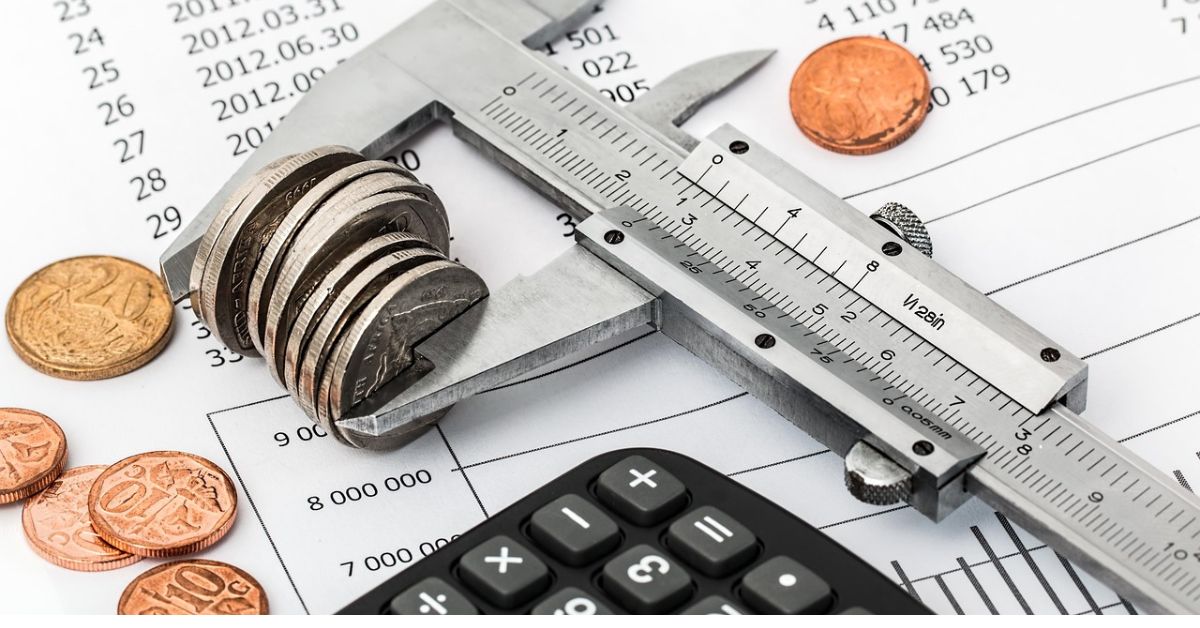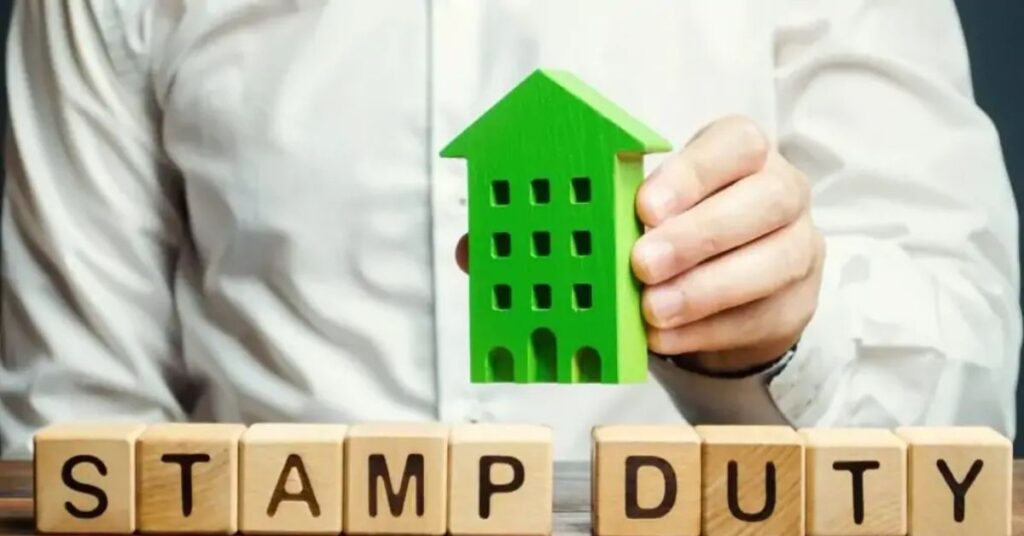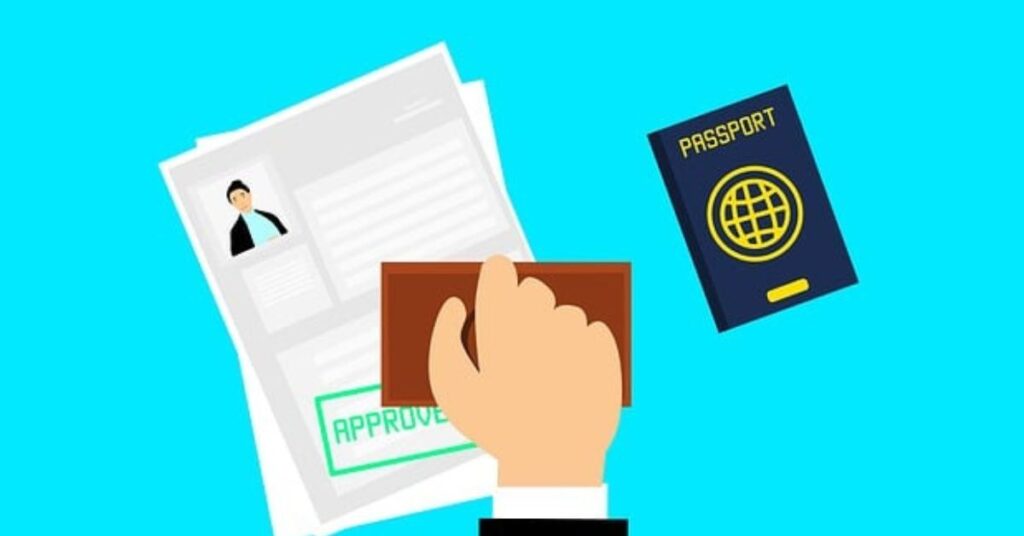Right, let’s talk about this thing called accumulated financial supplement debt. It sounds a bit formal, doesn’t it? But honestly, it’s something a fair few Aussies are dealing with, and it can really sneak up on you if you’re not paying attention. Think of it as money you’ve borrowed from the government, usually for study or training, that you’ve got to pay back later on. It’s not like a regular credit card debt; it has its own rules and ways of growing.
Understanding Accumulated Financial Supplement Debt And Why It Matters
The main thing to get your head around is that this debt doesn’t just sit there – it can actually increase over time. This happens because it gets indexed, meaning it’s adjusted based on things like inflation. So, that $10,000 loan you took out years ago might look a lot bigger now, even if you haven’t borrowed any more money. It’s a bit like a snowball rolling down a hill. This growth is why it matters so much; it can become a significant chunk of your financial life before you know it.
Here are a few common types of these loans:
- HELP (Higher Education Loan Program): This is the big one for university students.
- VSL (Vocational Student Loan): For those doing specific TAFE or VET courses.
- SFSS (Student Financial Supplement Scheme): An older scheme, but some people are still paying it off.
- TSL (Trade Support Loan): For apprentices and trainees in certain trades.
Understanding which type of debt you have is the first step. It affects how it’s managed and repaid, and ultimately, how it impacts your wallet down the track. Ignoring it won’t make it go away; in fact, it’s more likely to get bigger and more complicated.
What Is Accumulated Financial Supplement Debt: Origins & Who It Applies To
So, you’ve heard the term ‘accumulated financial supplement debt’ and are wondering if it applies to you. Essentially, it’s a category of government-backed loans designed to help people with education or training costs. Think of it as a helping hand for things like university degrees or vocational courses. These aren’t just simple loans; they have specific rules about how they grow and how you pay them back. The key thing to remember is that these debts can stick around for a long time if not managed properly.
Several types of loans fall under this umbrella. The most common ones you might encounter include:
- HELP (Higher Education Loan Program): This is the big one for university students, covering undergraduate and postgraduate studies.
- VSL (Vocational Student Loan): For those pursuing specific vocational education and training.
- SFSS (Student Financial Supplement Scheme): This was available for tertiary students whose parents earned below a certain income level.
- SSL (Student Start-up Loan) and ABSTUDY SSL: These are specifically for Aboriginal and Torres Strait Islander students and apprentices.
- TSL (Trade Support Loan): Aimed at individuals undertaking Certificate III or IV qualifications in certain trades.
If you’ve ever received government assistance for your studies or training, there’s a good chance you might have an accumulated financial supplement debt. It’s worth checking your records, especially if you’ve completed a course in the last decade or so. You might even receive a T5007 slip which details these amounts. Understanding these origins is the first step to figuring out if do you have an accumulated financial supplement debt and what it means for your finances. It’s not just about the initial amount borrowed; these debts can grow over time due to indexation, which is tied to inflation. This means the amount you owe can increase even if you’re not actively borrowing more. It’s a bit like a snowball rolling downhill, gathering more snow as it goes. This is why it’s so important to get a handle on it early.
How Accumulated Financial Supplement Debt Is Indexed And How It Grows Over Time
It’s easy to think of a loan as a fixed amount, but with accumulated financial supplement debt, that’s often not the case. This type of debt doesn’t just sit there; it actively grows. The main reason for this is indexing. Essentially, the Australian Taxation Office (ATO) adjusts the debt amount based on changes in the Consumer Price Index (CPI), which is a measure of inflation. So, even if you haven’t added to the debt yourself, the amount you owe can increase over time simply because the cost of living has gone up.
This indexing means that a debt that might have seemed manageable initially can become significantly larger over the years. For example, a loan taken out a decade ago for a few thousand dollars could now be worth considerably more, even with some repayments made. It’s a bit like a snowball rolling downhill – it picks up more snow and gets bigger as it goes.
Here’s a simplified look at how it can grow:
- Initial Debt Amount: The original sum borrowed.
- Indexation: An annual adjustment based on inflation (CPI).
- Compulsory Repayments: Payments made when your income reaches a certain threshold.
- Total Debt: The sum of the initial debt, accumulated indexation, minus any repayments made.
The impact of indexation can be substantial, turning a seemingly small debt into a much larger financial obligation over time.
Consider this scenario:
- Year 1: You take out a loan of $5,000. CPI increase is 2%.
- Year 2: Your debt is now $5,100 ($5,000 + 2% indexation). You make a repayment of $500. Your remaining debt is $4,600.
- Year 3: CPI increase is 3%. Your debt is now $4,738 ($4,600 + 3% indexation). You make another repayment of $500. Your remaining debt is $4,238.
As you can see, even with repayments, the indexation means the debt doesn’t always decrease as quickly as you might expect. It’s important to keep an eye on these adjustments, as they directly affect how much you ultimately need to repay.
Understanding how your debt grows is the first step in getting it under control. Without this knowledge, you might be making repayments but still find the total amount owed isn’t decreasing as much as you’d hoped, which can be quite disheartening.
Repayment Obligations: How Accumulated Financial Supplement Debt Is Collected

Once your income hits a certain level, you’ll need to start paying back your accumulated financial supplement debt. This isn’t optional; it’s a compulsory repayment. The Australian Taxation Office (ATO) manages this collection process, usually taking the money directly from your wages before it even hits your bank account. It’s a bit like a tax, but specifically for your student loan.
Here’s how it generally works:
- Income Thresholds: There are specific income levels that trigger these repayments. If your income is below this threshold, you don’t have to make compulsory repayments. However, the threshold can change each year, so it’s good to keep an eye on it.
- Repayment Rate: The amount you repay is a percentage of your taxable income. This percentage isn’t fixed; it increases as your income goes up. So, the more you earn, the higher the percentage of your income that goes towards the debt.
- Collection Method: For most people, the repayment is automatically deducted from their pay by their employer. They report this to the ATO. If you’re self-employed or have other income sources, you’ll likely need to make these payments as part of your tax return.
The ATO will notify you if you meet the repayment criteria. It’s important to understand that these repayments are calculated based on your taxable income for the financial year. If your income fluctuates, your repayment amount will also change.
It’s worth noting that while these repayments are compulsory, you can always choose to make extra payments at any time to reduce the overall debt faster. This can save you money on interest and indexing over the long run.
For example, if your income is $60,000 and the repayment rate for that income bracket is 3%, then $1,800 would be collected for your debt that year. This amount is then deducted from your pay throughout the year. If your income increases to $70,000, the repayment rate might jump to 4%, meaning $2,800 would be collected. It’s a system designed to align repayment with your capacity to pay.
How Accumulated Financial Supplement Debt Affects Income Tax, Wages, And Superannuation
Having accumulated financial supplement debt, like a HELP loan, can feel like a constant weight, and it definitely has a way of showing up in your everyday finances. When your income hits a certain point – and this threshold changes each year, so keep an eye on it – you’ll start making compulsory repayments. These aren’t optional; they’re taken directly from your pay before you even see it.
The amount taken out depends on how much you earn. It’s a percentage of your taxable income, and it goes up as your income goes up. So, if you get a pay rise, a bit more of that extra cash will be directed towards your debt. It’s designed to be manageable, but it does mean less money in your pocket each payday.
Here’s a general idea of how it works, though the exact percentages can shift:
- Lower income bracket: A smaller percentage of your income is repaid.
- Middle-income bracket: A moderate percentage is repaid.
- Higher income bracket: A larger percentage is repaid.
This means your take-home pay is directly impacted. It’s not just about the loan itself; it’s about how it interacts with the tax system. The Australian Taxation Office (ATO) manages these repayments, so it’s all tied into your tax return and your regular pay cycle.
When it comes to superannuation, the rules are a bit different. Generally, compulsory repayments on your financial supplement debt aren’t deducted from your super contributions. Your employer still pays the standard super guarantee to your super fund. However, if you have a very large debt and are making significant repayments, it could indirectly affect your ability to make voluntary contributions to your super, as you’ll have less disposable income available. It’s always a good idea to check the latest guidelines from the ATO or speak to a financial advisor about how your specific situation might play out.
It’s important to remember that these repayments are calculated on your taxable income. This means things like salary sacrificing for superannuation or other pre-tax deductions can actually lower the amount of financial supplement debt you repay each year, as your taxable income is reduced. It’s a bit of a balancing act, but understanding these mechanics can help you plan your finances more effectively.
Impacts Of Accumulated Financial Supplement Debt On Bankruptcy, Credit, And Financial Well-being
Accumulated financial supplement debt can really put a spanner in the works when it comes to your financial future. It’s not just about owing money; it’s about how that debt can snowball and affect major life decisions.
The most immediate concern is often the impact on your credit score. A poor credit history, which can result from missed or late payments on these debts, makes it significantly harder to get approved for things like a mortgage, a car loan, or even a rental property. Lenders look at your credit report to gauge your reliability, and a history of debt issues can make you seem like a risk.
Beyond credit scores, this type of debt can limit your financial flexibility. When a substantial portion of your income is tied up in compulsory repayments, it leaves less room for savings, investments, or even just building an emergency fund. This can make it tough to handle unexpected expenses, like a car breakdown or a medical bill, potentially forcing you to take on more debt to cover them.
Here’s a breakdown of how it can affect you:
- Creditworthiness: Difficulty obtaining new loans, credit cards, or even favourable interest rates. This can extend to renting accommodation or securing mobile phone plans.
- Financial Flexibility: Reduced capacity to save, invest, or respond to financial emergencies. This can create a cycle where you’re constantly playing catch-up.
- Mental Wellbeing: The stress and anxiety associated with significant debt can take a toll on your mental health, affecting decision-making and overall quality of life.
- Bankruptcy Risk: While not an automatic outcome, unmanageable accumulated debt can increase the likelihood of needing to consider more drastic measures like bankruptcy if other repayment strategies fail.
The pressure of owing money can feel relentless. It’s easy to get caught in a loop where you’re focused solely on making payments, leaving little room for planning or enjoying life. This constant financial strain can impact your relationships and your overall outlook.
If your financial supplement debt has grown significantly, it’s worth understanding how it might be affecting these areas. Ignoring it won’t make it disappear, and proactive management is key to regaining control.
Strategies For Managing Or Reducing Accumulated Financial Supplement Debt

Dealing with accumulated financial supplement debt can feel like a big hurdle, but there are definitely ways to get a handle on it. The first thing to remember is that this debt, like the Student Financial Supplement Scheme (SFSS) or HELP loans, can grow over time due to indexing, so tackling it sooner rather than later is a good idea. Making a solid plan is your best bet.
Here are some practical steps you can take:
- Budgeting is key: Get a clear picture of where your money is going. Track all your income and expenses. Look for areas where you can cut back, even small amounts, and put that extra cash towards your debt. Setting realistic goals, like paying off a certain amount each month, can keep you motivated.
- Prioritise your repayments: Once your income hits the repayment threshold (which changes annually), you’ll have compulsory repayments. Understand these thresholds and repayment rates. If you have other debts, consider which ones are costing you the most in interest and focus on those alongside your financial supplement debt.
- Explore repayment options: While compulsory repayments are based on your income, you can always make voluntary payments to reduce the principal amount faster. This can save you money on interest over the long run, especially if the debt is indexed.
- Avoid taking on more debt: Try not to rely on credit cards or other loans to manage your day-to-day expenses. If you can, limit their use or only use them for genuine emergencies. This prevents the debt from snowballing.
Sometimes, you might consider consolidating your debts if you have multiple loans. However, be really careful with this – make sure the consolidation actually works in your favour and doesn’t just shift the problem. Refinancing might be an option for some types of debt, but it’s less common for government-backed student loans.
If things feel too overwhelming, don’t hesitate to seek professional help. Financial counsellors or debt specialists can offer tailored advice and help you create a repayment strategy that fits your specific situation. They’ve seen it all before and can guide you through the process without judgment.
What You Should Know And Next Steps If You Have Accumulated Financial Supplement Debt
Accumulated financial supplement debt, like HELP or SFSS loans, can grow surprisingly quickly due to indexing. It’s not just about the initial amount you borrowed; it’s about how it’s affected by inflation over time. Understanding how this debt works is the first step to getting it under control.
If you’re finding yourself struggling with this type of debt, or any other debt for that matter, it’s important to take action. Ignoring it will only make things worse. Here are some practical steps you can consider:
- Review Your Debt: Get a clear picture of exactly how much you owe, including any accumulated interest or indexation. Knowing the specifics is vital.
- Create a Budget: Map out your income and expenses. See where your money is going and identify areas where you can cut back to put more towards your debt.
- Prioritise Repayments: Once your income reaches the compulsory repayment threshold, make sure you’re meeting those obligations. Consider making voluntary repayments if you can afford it, especially if you want to pay it off faster.
- Seek Professional Advice: Don’t hesitate to talk to a financial counsellor or a debt specialist. They can offer personalised strategies and help you create a realistic repayment plan. You can find resources through organisations that offer debt management advice.
It’s easy to feel overwhelmed by debt, but remember that many Australians face similar challenges. The key is to be proactive and informed. Taking small, consistent steps can make a big difference in the long run.
Remember, the sooner you address your financial supplement debt, the more control you’ll have over your financial future. Don’t let it become a burden that holds you back.
Feeling swamped by extra money owed? It’s important to know the basics and what to do next. If you’ve found yourself with more debt than you can handle, don’t worry, there are steps you can take. We’re here to help you understand your options and find a way forward. Visit our website for clear advice and support.
Frequently Asked Questions
What exactly is financial supplement debt?
Financial supplement debt refers to money borrowed from the government to help pay for further education or training. Think of it like a loan for things like university fees, textbooks, or even living costs while you study. Common examples in Australia include HELP, VSL, SFSS, and TSL loans.
How does this debt grow over time?
This type of debt doesn’t just stay the same; it can increase. The Australian Taxation Office (ATO) indexes these loans, which means they go up with inflation, similar to how the cost of living rises. So, even if you don’t add to it, the amount you owe can get bigger each year.
When do I have to start paying it back?
You’re required to start making compulsory repayments once your yearly income reaches a certain level. For the 2023-2024 financial year, this minimum income threshold was $54,435. The more you earn above this, the higher the percentage of your income that goes towards paying back the debt.
Can this debt affect my credit score or ability to get loans?
While not directly impacting your credit score in the same way as a credit card, having significant financial supplement debt can limit your financial flexibility. It reduces the amount of money you have available for other things, which could indirectly affect your ability to save for a house deposit or take out other loans in the future.
What happens if I can’t afford to pay it back?
If you’re struggling to make repayments, it’s important to seek help. You can explore options like speaking with a financial counsellor or debt specialist. They can help you create a repayment plan or investigate government assistance programs that might be available during tough financial times.
Are there ways to manage or reduce this debt faster?
Yes, there are strategies. Creating a strict budget to track your money, looking for ways to cut back on non-essential spending, and consistently paying more than the minimum required can help. Some people also consider consolidating debts if they have multiple loans, but it’s crucial to understand the risks involved first.











